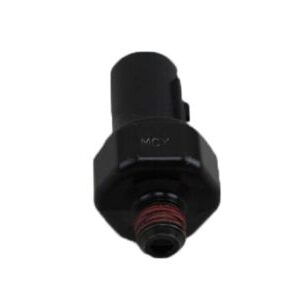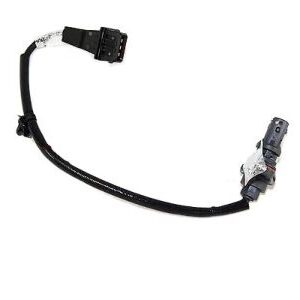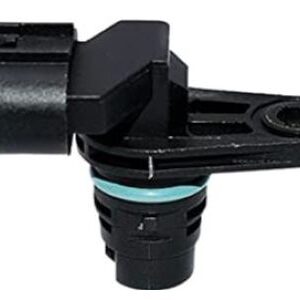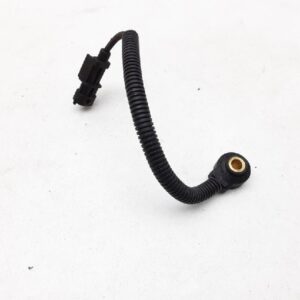Title: Navigating Engine Performance: The Map Sensor Guide
Introduction:
In the complex world of automotive engineering, precision is key. One of the unsung heroes ensuring this precision is the Manifold Absolute Pressure (MAP) sensor. Often overshadowed by more prominent components, the MAP sensor quietly plays a crucial role in optimizing engine performance and efficiency. Let’s embark on a journey into the realm of MAP sensors, exploring their function, significance, and the pivotal role they play in keeping your engine running smoothly.
Understanding MAP Sensors:
The MAP sensor is a small but powerful electronic device nestled within your vehicle’s engine bay. Its primary function is to measure the pressure inside the intake manifold and provide real-time data to the engine control unit (ECU) or powertrain control module (PCM).
How MAP Sensors Work:
MAP sensors operate on a simple principle: as the engine draws in air, the pressure inside the intake manifold changes. The MAP sensor detects these changes and converts them into electrical signals, which are then interpreted by the ECU or PCM. Based on this information, the ECU adjusts fuel injection timing, ignition timing, and other engine parameters to optimize performance and efficiency.
Importance of MAP Sensors:
MAP sensors play a vital role in modern engine management systems for several reasons:
1. Engine Performance Optimization: By providing real-time data on intake manifold pressure, MAP sensors help the ECU adjust fuel delivery and ignition timing for optimal engine performance under various operating conditions.
2. Fuel Efficiency: MAP sensors contribute to improved fuel efficiency by ensuring that the engine receives the correct air-fuel mixture for combustion. This helps maximize fuel economy and reduce emissions.
3. Turbocharger Control: In turbocharged engines, MAP sensors play a crucial role in regulating boost pressure by monitoring intake manifold pressure. This ensures that the turbocharger operates efficiently and prevents over-boost conditions that could damage the engine.
4. Emissions Control: Proper engine management, facilitated by MAP sensors, helps minimize harmful emissions by optimizing combustion efficiency and reducing the production of pollutants.
Maintenance and Replacement:
To ensure optimal engine performance, it’s essential to properly maintain your MAP sensor. Over time, MAP sensors may become contaminated with dirt, oil, or other debris, leading to inaccurate readings or failure. Regular inspection and cleaning of MAP sensors, as part of routine maintenance, can help prevent issues and ensure proper function. Signs of a faulty MAP sensor include rough idling, decreased engine performance, and illuminated check engine light.
Conclusion:
In conclusion, MAP sensors may be small in size, but their impact on engine performance, efficiency, and emissions control is significant. By continuously monitoring intake manifold pressure, MAP sensors help optimize engine operation, improve fuel efficiency, and reduce emissions. So, the next time you start your engine, take a moment to appreciate the silent hero working behind the scenes – the MAP sensor.
In stock (can be backordered)
$29,137.67
Title: Navigating Engine Performance: The Map Sensor Guide
Introduction:
In the complex world of automotive engineering, precision is key. One of the unsung heroes ensuring this precision is the Manifold Absolute Pressure (MAP) sensor. Often overshadowed by more prominent components, the MAP sensor quietly plays a crucial role in optimizing engine performance and efficiency. Let’s embark on a journey into the realm of MAP sensors, exploring their function, significance, and the pivotal role they play in keeping your engine running smoothly.
Understanding MAP Sensors:
The MAP sensor is a small but powerful electronic device nestled within your vehicle’s engine bay. Its primary function is to measure the pressure inside the intake manifold and provide real-time data to the engine control unit (ECU) or powertrain control module (PCM).
How MAP Sensors Work:
MAP sensors operate on a simple principle: as the engine draws in air, the pressure inside the intake manifold changes. The MAP sensor detects these changes and converts them into electrical signals, which are then interpreted by the ECU or PCM. Based on this information, the ECU adjusts fuel injection timing, ignition timing, and other engine parameters to optimize performance and efficiency.
Importance of MAP Sensors:
MAP sensors play a vital role in modern engine management systems for several reasons:
1. Engine Performance Optimization: By providing real-time data on intake manifold pressure, MAP sensors help the ECU adjust fuel delivery and ignition timing for optimal engine performance under various operating conditions.
2. Fuel Efficiency: MAP sensors contribute to improved fuel efficiency by ensuring that the engine receives the correct air-fuel mixture for combustion. This helps maximize fuel economy and reduce emissions.
3. Turbocharger Control: In turbocharged engines, MAP sensors play a crucial role in regulating boost pressure by monitoring intake manifold pressure. This ensures that the turbocharger operates efficiently and prevents over-boost conditions that could damage the engine.
4. Emissions Control: Proper engine management, facilitated by MAP sensors, helps minimize harmful emissions by optimizing combustion efficiency and reducing the production of pollutants.
Maintenance and Replacement:
To ensure optimal engine performance, it’s essential to properly maintain your MAP sensor. Over time, MAP sensors may become contaminated with dirt, oil, or other debris, leading to inaccurate readings or failure. Regular inspection and cleaning of MAP sensors, as part of routine maintenance, can help prevent issues and ensure proper function. Signs of a faulty MAP sensor include rough idling, decreased engine performance, and illuminated check engine light.
Conclusion:
In conclusion, MAP sensors may be small in size, but their impact on engine performance, efficiency, and emissions control is significant. By continuously monitoring intake manifold pressure, MAP sensors help optimize engine operation, improve fuel efficiency, and reduce emissions. So, the next time you start your engine, take a moment to appreciate the silent hero working behind the scenes – the MAP sensor.
| Warehouse | Inventory at warehouse 2 |
|---|




Get E-mail updates about our latest products and special offers.
Sensors and More is Jamaica’s ultimate online auto parts store. Established in 2020, we specialize in genuine electrical parts for Japanese, Read more…
Reviews
There are no reviews yet.